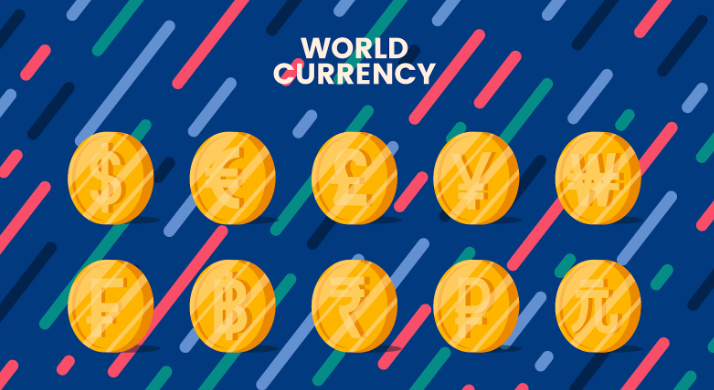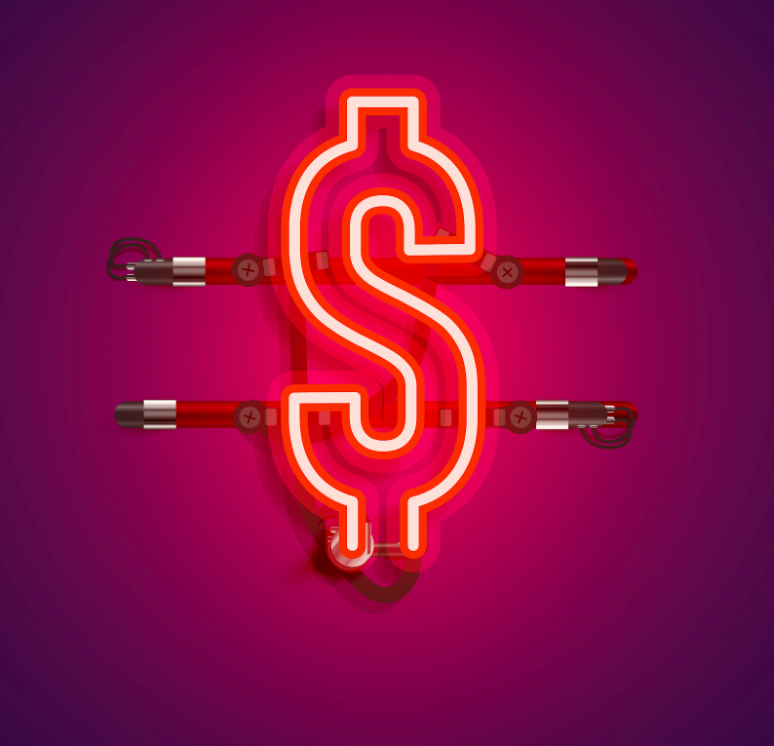Regardless of the value one assigns to money in personal life, the importance of money within the context of human civilization cannot be understated. In many ways the development of currency was the catalyst for the development of government and the advanced social infrastructure that formed the foundation for the modern world as we know it.
This is what makes the acquisition of money a divisive subject. On the one hand money is a crucial system which undeniably streamlines the exchange of goods around the world, while creating wealth-incentives for the workforce. On the other hand it can be detrimental to one’s health when one determines their value as an individual solely by measure of their material wealth.
By exploring the evolution of money throughout history however, one can achieve a greater understanding of money’s role in society, which can in turn contribute to wiser financial decision making. In this article we will explore 100 of the most interesting facts concerning money around the world–its fascinating history in various cultures and time periods throughout time, as well as some lesser-known statistics and events surrounding the development of world currency into the Almighty Dollar as we know it today.
Skip To:- Evolving World Currencies through Time
- The Surprising Facts of World Currency
- World Finance, Currency Minting, and Debt
- The US Mint and the History of Counterfeiting
- The Amazing Link Between Money, Drugs, and the Flu
- The Bizarre Facts and Faces of Money–Real and Imagined
- Inflation, Unique Currency Features, and Recycling Money
- Children’s Allowance, Debt, and Spending Habits

Evolving World Currencies through Time
- Despite the immense complexities of financial institutions, there are only three ways for a government to acquire money: collecting taxes or revenue from business and people, borrowing money, and printing money.
- Over 170 different currencies are in-use around the world today.
- Early Romans used salt as a form of currency–even the world salary is derived from the latin world for ‘salt.’
(image source)
- Similarly, engraved tea bricks were used in Siberia until WWII.
(Image Source)
- The Pound Sterling is the UK’s official unit of currency and was introduced in the eighth century during the reign of Anglo Saxon King Offa of Mercia, making it the oldest currency still in-use.
- The first paper money was made in China over 1,000 years ago.
- The first coins were minted around 2,500 years ago.
- In 1652 the Massachusetts Bay Colony became the first to make coins.
- In 1785 the United States officially adopted the US Dollar as its unit of currency.
- The earliest forms of the U.S. Mint ran on horsepower, literally–oxes, horses, and even men ran manual crank engines to power the machinery.
The Surprising Facts of World Currency
- Martha Washington donated her silverware to assist efforts to create the earliest US coins.
- Today the US Dollar is the most commonly used currency in the world.
- The US Department of Engraving and Printing will sell you $10,000 for only $45. The catch? It’s completely shredded into a fine pulp, which is purchasable through the bureau’s website.
(Image Source)
- In 1787, Benjamin Franklin came up with the motto for the first US Coins called the Fugio Coin. The motto read “Mind Your Business.”
- “In God We Trust” did not appear on US currencies until 1864 where it appeared on the two cent coin.
- “In God We Trust” did not become the accepted motto of all US currency until 1963.
- Several unique bits of phraseology can be found on the US Dollar such as “Novus Ordo Seclorum” which translates into “New Order for the Ages.”
- “Annuit Coeptis” translates into “God (or He/Providence) has favored our undertakings.”
- UK coins can be arranged to form an esoteric shield, which is shown on the £1 coin. This clever feature was created by designer Matthew Dent in 2008.
(Image Source)
World Finance, Currency Minting, and Debt
- Startlingly, global debt is now 2.5 times greater than the world’s total stockpile of money: Total debt–which is the amount owed by every individual, organization and country on the planet–hit $199 trillion in 2016. The world however, has only $80.9 trillion in cash and bank deposits.
- The overwhelming majority of global wealth is digital–with only 8% of global currency taking the form of bank notes and coins.
- Zero trees are felled during the process of printing the US dollar, which is made from a cotton-linen mix without the use of wood pulp.
- The US Dollar is 75% cotton and 25% linen, and during Ben Franklin’s time was often repaired with needle and thread.
(Image Source)
- Likely the most ridiculous currency originates from the partnership between the Polynesian Island of Niue and the New Zealand Mint, which mints legal tender modeled after everything from Star Wars to Disney’s Frozen.
(Courtesy of New Zealand Mint)
- Animal fat is a common ingredient in the minting of plastic banknotes around the world–with around 24 countries having currencies with trace amounts.
- Pennies are surprisingly costly: taking into account the cost of production, each penny costs over 2 cents to produce, making the penny much more expensive to make than their return at face value.
- The first US pennies were 100% copper, while today’s pennies are 95% zinc with a cellophane-thin coating of copper.
- Despite the US nickel (5 cents) being worth half the value of a dime (10 cents), the nickel costs 11.18 cents to mint, while the dime only costs 5.65 cents to mint.
- US currencies have a predictable lifespan with coins lasting an average of 30 years or longer, while the $1 dollar bill lasts an average of 18 months, compared to a 9 year lifespan for the $50 and $100 dollar bills.
The US Mint and the History of Counterfeiting
- The US Bureau of Engraving and Printing is an operation comprising only 2 facilities in the United States, however these facilities combined consume a whopping 9.7 tons of ink in a single day.
- The ink used to print US dollars is extremely valuable due to top-secret tech involved, which makes the ink simultaneously magnetic and traceable with color-changing characteristics.
- On closer inspection the Blue Ribbon on the $100 dollar bill appears to dance, a unique effect of the high tech printing process.
(Image Source)
- US dollars are printed on a Swiss Super Orlof Printing Press, which is valued at 7$ million dollars per unit, likely due to it’s incredible ability to exert 60 tons of pressure to inject the high-tech ink into the cloth of the dollar.
- The US Dollar is recognized as the highest quality banknote in the world due to the superior standard of its engravings.
- The color green was chosen for the US dollar because it is most resistant fading, wear, and tear in comparison to other colors.
- Surprisingly, counterfeit dollars can be too good with many counterfeit bills being flagged for their suspicious perfection.
- According to a report from the Federal Reserve, nearly 2/3 of $100 bills are unaccounted for, and are thus considered ‘missing.’
- The most popular target of counterfeiting operations is the $20 dollar bill with the $100 bill representing a close second.
- According to the Coinage Act of 1972, if a United States Mint employee is charged with counterfeiting the crime is punishable by death.
- The US Mint destroys defective coins through a machine-process called “waffling” before they are sent to be recycled.
- North Korea is the largest counterfeiter and specializes in ripping off US currencies.
- North Korea is so skillful at this craft that identification of their counterfeits requires special equipment at the Federal Reserve in order to identify them.
- As of 2009, an estimated $45 million worth of these counterfeited bills have been recovered, though as expected a much greater value is suspected to be in circulation.
- Founded in July of 1865, the Secret Service was originally created to fight the counterfeiting problem in the United States.
- By the end of the Civil War it was estimated that an astounding 33% to 50% of all currency in circulation was counterfeit.
- Before the Federal Reserve was created in 1913, each local bank was charged with printing its own money.
The Amazing Link Between Money, Drugs, and the Flu
- According to Researchers from Dartmouth, if you live in the United States or Canada then chances are that there is cocaine on your money.
- A whopping 90% of dollar bills in circulation are suspected to carry varying amounts of the drug, and perhaps most surprising is that dollar bills accumulate the drug within mere weeks of entering circulation.
- Giving new meaning to the term “dirty money,” European researchers report that UK banknotes carry over 26,000 bacteria, while newer bills carry around 2,400 bacteria.
- While much of this bacteria is considered harmless, a recent study from Oxford University reported that banknotes in the UK carry more harmful bacteria like E. Coli and Salmonella.
- The same study demonstrated that there are more germs on a £1 coin than on a toilet seat, however only 20% of people wash their hands after handling them.
- Another alarming fact about the potential danger of currency is the fact that the flu virus can survive on a dollar bill for up to 17 days!
- Scientists at New York University have even found traces of Anthrax on US dollars.
- Researchers from Harper Adams University in the UK report that the surface of cotton-based banknotes is ideal for carrying bacteria.
The Bizarre Facts and Faces of Money–Real and Imagined
- According to CNBC, the US Mint prints around $974 million annually, while the boardgame company, Hasbro, produces $30 billion in monopoly money every year.
- The study or collection of money is called “Numismatics.”
- The Romans were the first to engrave the image of a living person onto their coins, however in the United States it is illegal for the image of a living person to be printed on any currency–much to the chagrin of many political personalities today.
- The visage of several women have appeared on US currency, beginning with Queen Isabella imprinted on a coin in 1893.
- Since then there have been three more–Sacagewea, Susan B. Anthony, and Helen Keller have all three appeared on circulating currency in the United States.
- Booker T. Washington was the first African American to appear on US currency, specifically his image was engraved on a memorial half-dollar.
- Benjamin Franklin was the only non-president to appear on a US bill.
- Anti-slavery activist, Harriet Tubman, will appear on the new $10 bill in 2020 and will represent the first African American on a US bill in circulation.
- The British Monarch, Queen Elizabeth, can be seen on over thirty forms of currency worldwide, making her the most prolific personage currency-engraving in the world.
- According to recent figures from the Federal Reserve, as much as $1.48 trillion is in circulation, however around 60% of all physical dollars are held outside of the United States.
- One dollar bill weighs 1 gram, which means that it takes 454 bills to weigh in at one pound, and that a suitcase of $1 million counted in $100 dollar bills will weigh just over 20 pounds.
- Despite the popularity of lower denominations, it is reported that around 80% of the US currency is held in the form of $100 dollar bills.
Inflation, Unique Currency Features, and Recycling Money
- While currency-inflation may be bad in some countries, but only one place beats the inflation in Uzbekistan–where the Tiyin is worth around 2,400 times less than a US penny and 3,000 times less than a British Penny.
- Zimbabwe is the country with the worst inflation in the world, resulting from an economical crisis that started around 2000 and peaked in 2008.
- At the peak, a single U.S. Dollar was valued at the equivalent of 2,621,984,228 Zimbabwe Dollars. So if someone had only a $1 bill to their name and moved to Zimbabwe, they would become a billionaire overnight.
- The sad conclusion of this fantasy results from the following fact: a loaf of bread cost 10,487,936,912 Zimbabwe Dollars.
- After World War I, the Germans experienced hyper-inflation where their physical money lost nearly all of its value, resulting in families using the German bills as wallpaper, kid toys, and firepaper.
- In the US, when money becomes physically worn out, it is recycled–coins are melted down to mint new coins, and bills are shredded and used to make roof shingles or fireplace logs.
- There is also a farm in Delaware called the Money Farm that composts more than 4 tons in worn out cash daily.
- What’s the largest single-form currency ever made? The United States once printed a $100,000 dollar gold certificate, though it was not for public use and was printed solely for use between banks.
- In fact, until 1969 the United States Mint printed bills in high denominations of 500, 1,000, 5,000, and 10,000.
- A little known fact about the $5 bill is that all 50 states are listed on top of the Lincoln Memorial on the back of the bill, however in order to read them you will certainly need a magnifying glass.
- Have you ever wondered why US coins have ridges around them? When coins were minted with pure metal, criminals would shave them down to harvest the pure metal shavings, which was made nearly impossible through the combination of ridges and metal-plating on the coins.
- Looking for alternative use for your pennies? A penny in your garden’s soil can deter pests such as slugs, who receive an electric shock when they touch copper and zinc.
- Sailors would find uses for spare coins by hammering away at them before drilling out their middle to form a pure metal ring, either copper or silver respectively.
- Such pastimes might just be misguided though, as in 2015 the TSA reported finding $765,759.15 in spare change at airport security checkpoints.
Children’s Allowance, Debt, and Spending Habits

- Long-gone are the days single digit allowances, since recents surveys show a reported average of a whopping $65 allowance, reportedly equating to $800 annually.
- The figure might be higher though, since a study conducted by the American Institute of CPAs found that parents give each child around $70 in spending money monthly, while almost none of that sum is sent to savings.
- Speaking of savings–where in the world did “Piggy Bank” come from? The Old English word “pygg” referred to a kind of clay which people of the time used to mold clay pots and jars that often held the family’s money, too.
- American spending habits have never been the same since the invention of the credit card, which were first used in the United States in 1920.
- And today, a recent study found that it’s not only adults who face credit card debt; incredibly the study found that credit card debt is prevalent among even highschoolers.
- While kids may get more money earlier in life, they certainly shouldn’t expect retirement like earlier generations–with recent adjustments to Social Security shifting current benefits to age 67.
- While people may have less money, they certainly have more access to it than ever before; there are 1.6 million ATMs worldwide with at least one on every continent on the planet–yes, even Antarctica.
- Spending habits are fairly regular for ATM-users with Friday being the most popular day for withdrawal and $80 being the most popular amount to withdraw.
- An alarming statistic illuminates the danger of lottery habits: if someone drives 10 miles to purchase a lottery ticket, they are 3 times more likely to die on the car ride over than they are likely to win the lottery.
- Despite being a game of chance lottery players look to increase their odds–with 5% of lottery ticket buyers making up 51% of lottery tickets sold.
- Statistics like the above contribute to the reality of nationwide gambling raking in an astounding $35 billion annually–that’s more than music, theme parks, sporting events, and cruise chips combined.
- American spending on fast food trumps even spending on gambling–with $117 billion spent annually.
- Runner-ups on spending habits include beer at $96 billion, soda at $65 billion, and pets at $51 billion.
- Recent surveys show that Americans fantasy more over money than sex, perhaps indicative of the reality where so many are willing to chance the 10 million to 1 odds of the lottery.
- Perhaps one of the most prolific spenders of all time however, was Pablo Escobar, whose wealth was suggested by the following incredible fact–Escobar spent $2,500 monthly on rubber bands alone for his mountains of cash.
- Further painting the picture of his titanic wealth, rats went after Escobar’s warehouse hoard of cash, reportedly consuming $1 billion in cash before it was noticed at all.
- But who can spend more than a group project of prominent world powers? The international space station is the most expensive project ever attempted, totalling at $150 billion.
- Despite such wealth in the world, individual wealth remains low respectively–if you have $10 in your pocket and no debt then you are wealthier than 25% of Americans or 81 million people.
- The average American family carries a credit card debt of $8,000.
- Millions of Americans live on a meager budget of just $2 dollar a day.
Other References: LoveMoney, Moneysmartguides, Archives.gov, Mentalfloss, Businessinsider, Moneyversed, Seriousfacts,
